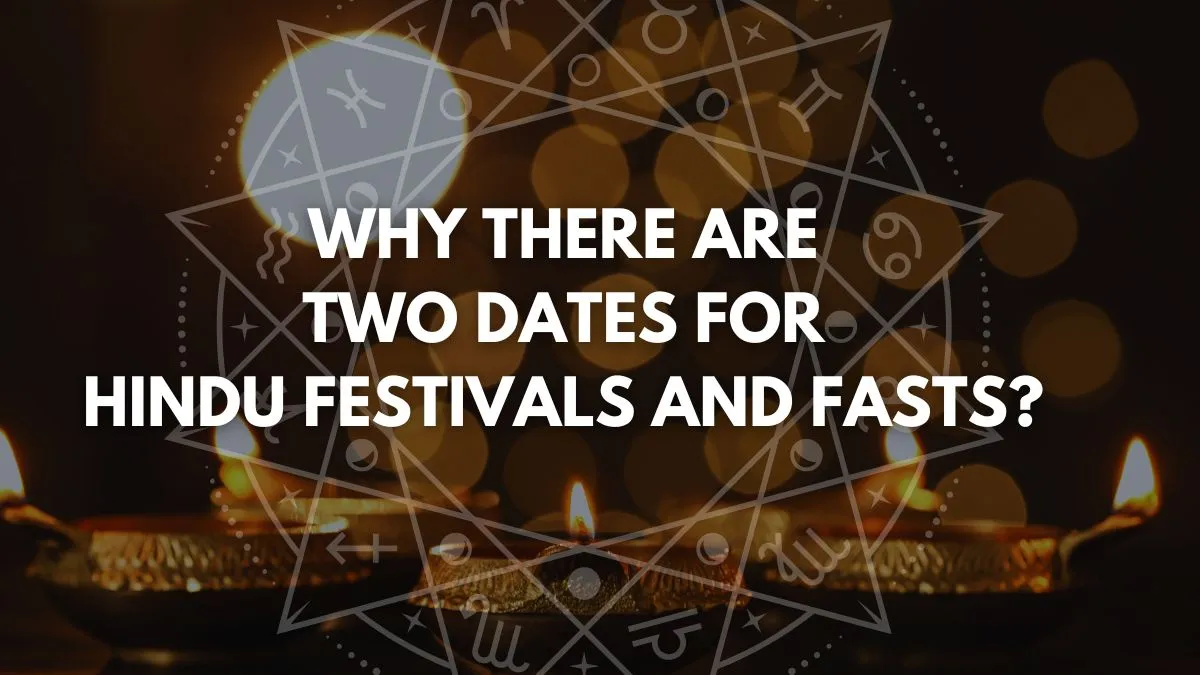- By Kashish Rai
- Wed, 23 Oct 2024 05:03 PM (IST)
- Source:JND
Have you ever noticed that Hindu festivals sometimes have two dates? This is also applicable to Diwali 2024, leaving people confused about when to celebrate Deepawali - 31st October or 1st November. This phenomenon is often attributed to the ancient Indian calendar system, Panchang. The Hindu Panchang plays a crucial role in determining the dates of Hindu festivals and fasts. It considers various celestial factors, including the lunar cycle, planetary positions, and solar movements. These astronomical influences can cause variations in the timing of festivals, resulting in two possible dates.
Let us understand the Panchang’s influence on two tithis or dates for celebrating a Hindu festival or vrat below:
Why There Are Two Dates For Hindu Festivals? Know Panchang’s Influence
The dual dates for Hindu festivals stem from variations in the Panchang calculation system, influenced by regional differences across India. Based on lunar cycles and solar events, the Hindu calendar's complex calculations can result in divergent festival dates leading to celebrations on two separate days in different regions.
- Amavasya And Purnimant Calendars: Regional variations in India's festival dates stem from differing calendar systems. Southern India and Gujarat follow the Amavasya calendar (new moon to new moon), whereas Northern India uses the Purnimanta calendar (full moon to full moon). This divergence results in conflicting festival dates, highlighting India's rich cultural diversity and regional differences.
- Amalgamation Of Lunar And Solar Calendars: The Hindu calendar blends lunar and solar systems, causing date variations. Most festivals follow lunar dates (tithis), while others, like Makar Sankranti, rely on solar movements (sun's entry into Capricorn). This dual approach results in differing dates, exemplified by Diwali's celebration on the lunar new moon, contrasting with Makar Sankranti's solar-based timing.

Hindu festival date variations stem from regional differences in Panchang calculations and calendar interpretations across India. (Image Source: Canva)
- Impact Of Adhik Maas And Kshay Maas: The Hindu calendar undergoes periodic adjustments to align lunar and solar cycles. Every three years, an extra month called Adhik Maas (or Mal Maas) is added, altering festival dates. Additionally, the occasional occurrence of Kshay Maas, a shorter month, also impacts festival timing, ensuring the lunar and solar calendars remain synchronised.
- Different Sects (Sampraday) And Their Panchangs: Different Panchangs are used for different sects, including Vikram Samvat and Shaka Samvat, alongside regional variations like Bengali, Tamil, Gujarati, and Telugu Panchangs. These diverse calendars lead to discrepancies in festival dates, highlighting India's rich cultural diversity. Regional Panchangs' unique calculations result in varying timings for celebrations.
- Smarta And Vaishnav Traditions: In Hinduism, Smarta and Vaishnav traditions have distinct approaches to festival dates. Vaishnav followers celebrate festivals tied to Lord Vishnu-related events in the Panchang, whereas Smarta followers follow the general Panchang. This difference leads to variations in festival dates between the two traditions, reflecting their unique spiritual focuses and cultural practices.
(Disclaimer: This is based on general public information. Jagran English does not confirm its veracity. Before adopting any measures, consult an expert in the relevant field.)

